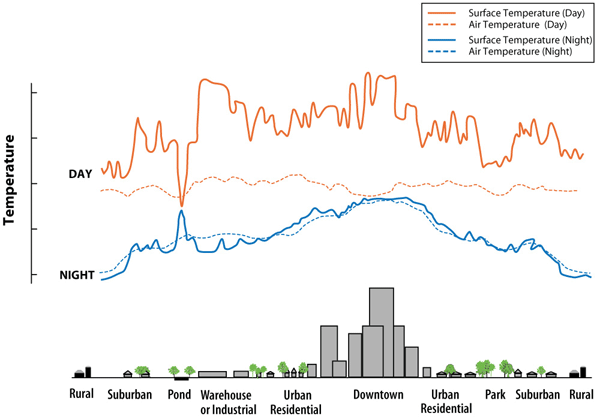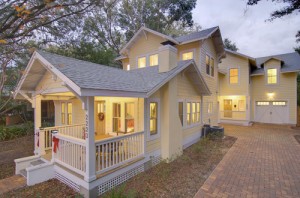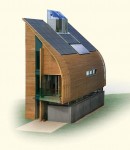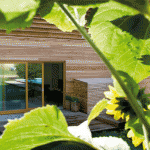Did you know that your roof color can actually affect your energy bill, your comfort in the house and even contribute to climate change? It’s true. Our usually dark colored composition roofs contribute to what is called an “urban heat island.” The problem with most of home roofs is that they absorb the heat of the sun, the temperature of the area rises and our air conditioners have to work much harder to keep us all cool and cozy.
What’s a Heat Island?
No, it’s not an island in the Bahamas. The term “heat island” describes built up areas that are hotter than nearby rural areas. According to the EPA, the annual air temperature of a city with 1 million people or more can be 1.8–5.4°F warmer than its surroundings. In the evening, the difference can be as high as 22°F.

Heat islands are no joke. They can affect communities by increasing summertime peak energy demand, air conditioning costs, air pollution, greenhouse gas emissions, and heat-related illness.
What Can Home Owners Do?
Very simple. Next time you are replacing your roof, opt for a light colored type with a reflective barrier. You see, a cool roof reflects and emits the sun’s heat back to the space instead of transferring it to the building below. This helps keep your roof cooler and reduces your cooling load and air conditioning needs. Cool, isn’t it?
Most roofers in San Jose area are aware of this and do offer options to address this problem. All we need to do as a community is to ask.
The most common option is a standard 30 year, light tile composition roof. Combine OSB (oriented strand board) sheathing with radiant barrier foil and lay the tiles on top it. Walla! There are some other methods of achieving the same but you get the point – the solution is not complicated or expensive.

The installation cost premium for cool roofs versus conventional roofing materials ranges from zero to 5 or 10 cents per square foot for most products but the benefits of these cool roofs are huge. In fact, according to the EPA website, a California study found that cool roofs provide an average yearly net savings of almost 50 cents per square foot. This number includes the price premium for cool roofing products and increased heating costs in the winter as well as summertime energy savings, savings from downsizing cooling equipment, and reduced labor and material costs over time due to the longer life of cool roofs compared with conventional roofs.
Now cool roofs is not going to entirely solve the heat island problem because we will still need more vegetation and cool pavements but it’s a start. As you might have read in the previous post, Steven Chu, the US Secretary of Energy and a Nobel prize-winning scientist, said that making roofs white or light-colored would help to reduce global warming.So there you have it, another no brainer solution that requires nothing but a shift of awareness and a slight style adjustment. Not only your energy bills will be lower you will be doing a great deal of good for the environment.
 Confessions of an Overzealous Green Building Advocate
Confessions of an Overzealous Green Building Advocate Green vs. Sustainable, Who Wins?
Green vs. Sustainable, Who Wins? Discover The Principles of Baubiologie
Discover The Principles of Baubiologie
HI Tadas,
That’s very interesting. Makes sense, right. Ever been in a black car parked in the sun during the summer! Compare that with a white car and here you have your example.
Doing some little things can make a big difference in the long run.
Keep sharing I enjoy reading.
I think it makes sense too Perig. The only thing I was thinking is whether those dark roofs are beneficial in the winter because you would have to use less energy to heat the place. I mean what if having to spend less energy to heat the home would offset the savings of having to cool it less in the summer? But it seems that here, in California, we spend more energy cooling our places, rather then heating them.
You’re absolutely right. That would be interesting to have some number of how many days the heater is on vs how many days the AC is on.